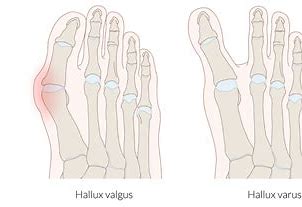What is JHV?
JHV, often called a "bunion" in young athletes, is a common foot deformity where the big toe angles toward the other toes. It's not just a cosmetic issue—it's a real sports injury that can affect performance.
Why Should Student Athletes Care?
If you're a dancer, footballer, or gymnast, you're at higher risk. Studies show that 25-32% of adolescent athletes in these sports develop JHV due to the repetitive stress they put on their feet during growth spurts.
The impact on your game is real:
It can reduce your jump height by 15-20%.
It can impair specific skills, like a footballer's instep kicking accuracy, by up to 40%.
🔬 The Science Behind the Injury
So, what's actually happening in your foot?
Hypermobility & Collapse: The joint at the base of your big toe becomes too flexible, and your foot's arch can collapse inward during activity.
Early Specialization is a Risk: Focusing intensely on one sport from a young age can triple your risk by putting constant stress on growing bones and joints.
How We Measure the Impact:
Balance: A 30% decline in Y-balance test scores.
Pressure: Abnormal pressure distribution on the sole of the foot.
Movement: Changes in your running or jumping form that can be detected with motion analysis.
💡 Modern Solutions & Recovery
Gone are the days of highly invasive surgeries with long recoveries. New treatments are all about precision and getting you back to your sport faster.
Revolutionary Minimally Invasive Treatments:
Percutaneous Osteotomy: Tiny incisions (<5mm) are used to precisely correct the bone angle with locking plates, causing minimal tissue damage.
Growth-Plate Sparing Techniques: For athletes who are still growing, surgeons use advanced imaging like MRI to guide the procedure and avoid damaging growth plates, using bioabsorbable screws that dissolve in the body.
Your Roadmap to Recovery (Evidence-Based Protocol):
Weeks 0-4: Recovery starts in the pool! Aquatic treadmill training keeps your cardio up without putting weight on the healing foot. Custom orthotics (shoe inserts) provide support.
Weeks 4-8: Time to rebuild strength with progressive resistance training to reactivate the small muscles in your foot.
Weeks 8-12: You're almost there! You'll begin sport-specific drills while wearing sensors to monitor your movement.
✅ When Are You Ready to Return to Play?
You can't just guess. Your return will be based on clear, measurable goals:
✓ 90% symmetry in foot pressure between both feet.
✓ At least 65° of range of motion in your big toe joint.
✓ No compensatory limp or strange movements during infrared motion analysis.
🛡️ Prevention is Key!
How can you avoid JHV in the first place?
Get Regular Screenings: Especially during your biggest growth spurts.
Use Custom Orthotics: Sport-specific shoe inserts can provide crucial arch support.
Manage Your Training Load: Work with your coach to ensure you're not overdoing it, based on movement screens.
Thanks to precision medicine, young athletes with JHV no longer have to choose between their sport and their health. With modern, minimally invasive treatments and structured rehab, you can correct the problem, recover your performance, and pursue your athletic dreams without long-term damage.
References: Data sourced from 2024 International Consensus on Foot & Ankle Sports Medicine.
